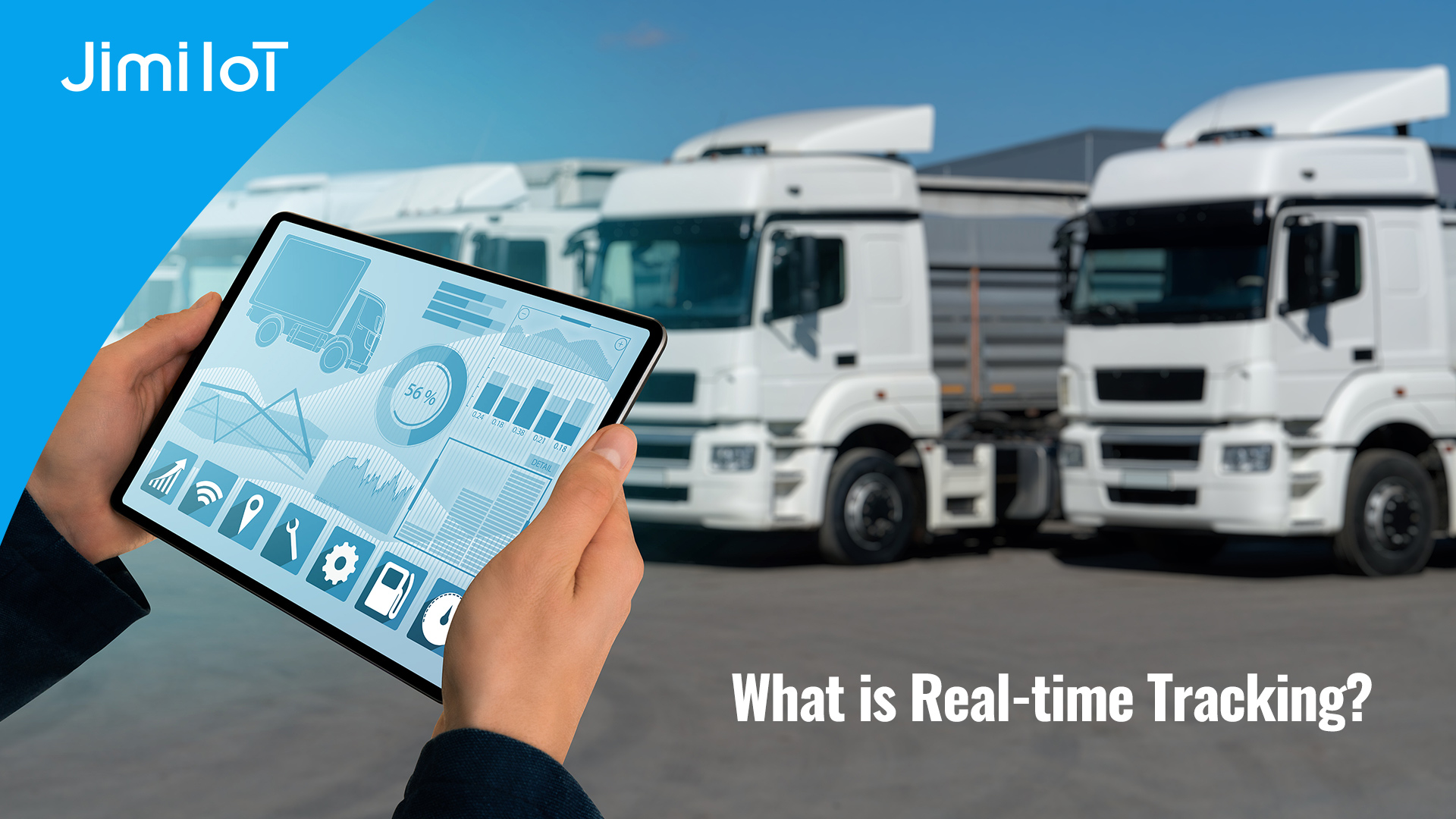Introduction
Real-time tracking is the continuous live monitoring and updating of the location and status of vehicles, personnel, assets, or consignments. It is an essential technology in modern logistics and operational management, providing organizations with immediate visibility into the movements and activities of their resources. This article offers a comprehensive explanation of real-time tracking, detailing its underlying technologies, operational processes, and the multiple benefits it brings to both transportation and field operations.

Defining Real-time Tracking
At its core, real-time tracking involves the ongoing collection and transmission of data regarding the location and status of a moving entity. Whether tracking vehicles on a road network, monitoring the whereabouts of field personnel, or managing the location of valuable assets, real-time tracking systems provide continuous updates that enable managers to make informed decisions promptly. The reliability of such systems hinges on the integration of advanced technologies like telematics, Global Positioning System (GPS), and robust network connectivity. Without any one of these critical components, the system cannot deliver data as accurately or as frequently, thereby compromising its ‘real-time’ nature.
The Technology Behind Real-time Tracking
The functionality of real-time tracking is underpinned by several key technologies that work in tandem:
1. Global Positioning System (GPS)
GPS technology is the cornerstone of real-time tracking. It provides precise geolocation data by connecting with a network of satellites, enabling the determination of a vehicle’s or asset’s exact position on the globe. This information is continuously updated as the asset moves, ensuring that its location is always known.
2. Telematics
Telematics involves the integration of telecommunications and informatics to capture, store, and transmit data. In the context of real-time tracking, telematics hardware installed in vehicles or on devices carried by employees collects crucial information such as speed, direction, and various operational metrics. This data is then transmitted to a centralized system where it is analyzed and processed.
3. Network Connectivity
A robust network connection is essential for real-time tracking, as it ensures that data is transmitted promptly from the field to the central system. Whether using cellular networks, satellite communication, or other forms of connectivity, uninterrupted data flow is vital for maintaining the live nature of the tracking system.
4. Data Processing and Software Integration
Once collected, the raw data must be processed and transformed into an easily understandable format. Sophisticated software platforms analyze incoming data streams and display the information on interactive maps and dashboards. These tools allow managers to view real-time positions, track routes, and monitor various metrics such as speed and fuel consumption.
How Real-time Tracking Works
For real-time tracking to be effective, several operational steps are involved:
- Installation of Hardware:
Devices equipped with GPS receivers and telematics modules are installed on vehicles or integrated into mobile devices used by field personnel. These devices are responsible for capturing location data as well as additional performance metrics. - Data Transmission:
The captured data is transmitted via a secure network connection to a central server. This process is continuous, ensuring that the data reflects the current state of the asset in near real-time. - Data Analysis:
Advanced algorithms within the tracking software analyze the incoming data to identify patterns, detect anomalies, and generate actionable insights. The system processes this information rapidly to update the live map view and alert managers to any deviations from expected behavior. - Real-time Visualization:
The processed data is displayed on an interactive, user-friendly interface. Managers can view real-time locations, monitor routes, and even track specific activities such as stops, accelerations, or unusual idling periods. This visual representation is critical for operational decision-making.
Benefits of Real-time Tracking
Real-time tracking offers a multitude of benefits that can significantly enhance both operational efficiency and safety. These benefits can be observed across various contexts, including vehicle fleets and field force management.
Enhanced Operational Visibility
One of the most prominent advantages of real-time tracking is the maximized visibility it provides. Managers can instantly determine the location of their assets without the need for manual updates or check-ins. This constant visibility helps in streamlining operations and ensuring that resources are deployed effectively.
Improved Safety and Security
Real-time tracking plays a vital role in enhancing the safety of both vehicles and personnel. In the event of an emergency or if an asset deviates from its intended route, managers can quickly locate the affected unit and dispatch assistance immediately. Additionally, tracking systems contribute to theft prevention by alerting managers to unauthorized movements or unexpected stops.
Accurate Estimated Time of Arrival (ETA) Calculations
By continuously monitoring an asset’s position and speed, real-time tracking systems can calculate precise ETAs. This feature is particularly valuable in logistics, where accurate delivery times are crucial for maintaining customer satisfaction and optimizing scheduling.
Timely Proof of Delivery (POD)
For delivery operations, real-time tracking can provide verifiable proof of delivery. The system records the exact time and location of a delivery event, which helps in resolving disputes and ensuring accountability throughout the delivery process.
Asset and Employee Accountability
When tracking extends beyond vehicles to include field personnel, it reinforces accountability. Managers can confirm that employees are present at designated work sites at scheduled times, reducing the likelihood of fraudulent attendance records and enhancing overall productivity. This accountability ensures that resources are used efficiently and that operational protocols are strictly followed.
Multi-modal Tracking Capabilities
Real-time tracking systems are not limited to a single mode of transport or asset type. They can be configured to track a diverse range of assets simultaneously—be it road vehicles, maritime vessels, or even air cargo. This multi-modal capability ensures that organizations maintain a comprehensive oversight of their entire operational landscape.
Optimized Resource Allocation
The continuous stream of data provided by real-time tracking enables managers to analyze trends and make data-driven decisions. Whether it is optimizing routes, reallocating resources during peak times, or adjusting operations based on real-time conditions, this technology ensures that organizations can respond swiftly to changing circumstances.
Conclusion
Real-time tracking is a powerful technology that transforms the way organizations manage their assets and operations. By harnessing the capabilities of GPS, telematics, and advanced network connectivity, real-time tracking provides unparalleled visibility into the location and status of vehicles, personnel, and other critical resources. This continuous stream of data facilitates accurate ETA predictions, enhances safety and security, and promotes operational efficiency through optimized resource allocation.
Whether applied to fleet management or field force operations, real-time tracking systems enable organizations to remain agile, responsive, and competitive in today’s fast-paced environment. The ability to monitor assets in real time not only reduces the risk of theft and operational disruption but also empowers managers to make informed decisions that drive productivity and efficiency.
In an era where timely information is the key to success, real-time tracking stands out as an indispensable tool for modern operational management. Embracing this technology allows organizations to streamline their processes, ensure accountability, and ultimately achieve higher levels of performance and service excellence.
Why JimiIoT
JimiIoT is a global leader in innovative IoT solutions. We provide cutting-edge hardware and software tailored to enhance efficiency and connectivity. Our range of products includes advanced GPS tracking devices, asset management solutions, smart vehicle dashcams, and telematics platforms. With a focus on technological excellence and customer satisfaction, we empower businesses to optimize operations and gain valuable insights from data-driven analytics. Trust JimiIoT to drive positive change and unlock growth opportunities in the digital age.
If you would like more details, please visit Facebook, LinkedIn, INS, and Twitter pages for further information.
